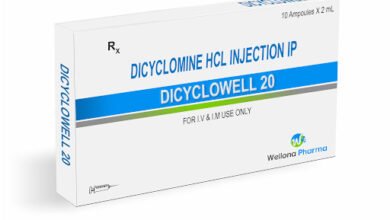Prednisone and other corticosteroids: Balance the risks and benefits
Prednisone and other corticosteroids
Weigh the benefits and risks of corticosteroids, such as prednisone, when choosing a medicine.
Corticosteroid medicines include cortisone, hydrocortisone and prednisone. They are useful in treating rashes, inflammatory bowel disease, asthma and other conditions. But corticosteroids also carry a risk of side effects.
How do corticosteroids work?
When prescribed in certain doses, corticosteroids help reduce inflammation. This can ease symptoms of inflammatory conditions, such as arthritis, asthma and skin rashes.
Corticosteroids also suppress the immune system. This can help control conditions in which the immune system mistakenly attacks its own tissues.
How are corticosteroids used?
Corticosteroid medicines are used to treat rheumatoid arthritis, inflammatory bowel disease (IBD), asthma, allergies and many other conditions. They also are used to prevent organ rejection in transplant recipients. They do that by helping to suppress the immune system. Corticosteroids also treat Addison’s disease. This is a rare disease that occurs when the adrenal glands don’t produce enough of the corticosteroid that the body needs.
Corticosteroids are given in many different ways, depending on the condition being treated:
- By mouth. Tablets, capsules or syrups help treat the inflammation and pain associated with certain chronic conditions, such as rheumatoid arthritis and lupus.
- By inhaler and intranasal spray. These forms help control inflammation associated with asthma and nasal allergies.
- In the form of eye drops. This form helps treat swelling after eye surgery.
- Topically. Creams and ointments can help heal many skin conditions.
- By injection. This form is often used to treat muscle and joint symptoms, such as the pain and inflammation of tendinitis.
What side effects can corticosteroids cause?
Corticosteroids carry a risk of side effects. Some side effects can cause serious health problems. When you know what side effects are possible, you can take steps to control their impact.
Side effects of corticosteroids taken by mouth
Corticosteroids that you take by mouth affect your entire body. For this reason, they are the most likely type of corticosteroid to cause side effects. Side effects depend on the dose of medication you receive and may include:
- A buildup of fluid, causing swelling in your lower legs.
- High blood pressure.
- Problems with mood swings, memory, behavior, and other psychological effects, such as confusion or delirium.
- Upset stomach.
- Weight gain in the belly, face and back of the neck.
When taking corticosteroids by mouth for a longer term, you may experience:
- Problems with the eyes, such as glaucoma or cataracts.
- A round face, which is sometimes called moon face.
- High blood sugar, which can trigger or worsen diabetes.
- Increased risk of infections, especially with common bacterial, viral and fungal microorganisms.
- Bone fractures and thinning bones, called osteoporosis.
- Fatigue, loss of appetite, nausea and muscle weakness.
- Thin skin, bruising and slower wound healing.
Side effects of inhaled corticosteroids
When using a corticosteroid that you breathe in, some of the drug may deposit in your mouth and throat instead of making it to your lungs. This can cause:
- Fungal infection in the mouth, known as oral thrush.
- Hoarseness.
You may be able to avoid mouth and throat irritation if you gargle and rinse your mouth with water after each puff on your corticosteroid inhaler. Be sure not to swallow the rinse water. Some researchers think that inhaled corticosteroid drugs may slow growth rates in children who use them for asthma.
Side effects of topical corticosteroids
Topical corticosteroids can lead to thin skin, skin lesions and acne.
Side effects of injected corticosteroids
Injected corticosteroids can cause temporary side effects near the site of the shot. These side effects include skin thinning, loss of color in the skin and intense pain. This pain is known as post-injection flare. Other symptoms may include facial flushing, insomnia and high blood sugar. Health care providers usually limit corticosteroid injections to three or four a year, depending on each person’s situation.
Reduce your risk of corticosteroid side effects
To get the most benefit from corticosteroid medicines with the least amount of risk:
- Ask your health care provider about trying lower doses or intermittent dosing. Newer forms of corticosteroids come in various strengths and lengths of action. Ask your provider about using low-dose, short-term medications or taking oral corticosteroids every other day instead of daily.
- Talk to your provider about switching to nonoral forms of corticosteroids. Inhaled corticosteroids for asthma, for example, reach lung surfaces directly. This reduces the rest of your body’s exposure to them and may lead to fewer side effects.
- Ask your provider if you should take calcium and vitamin D supplements. Long-term corticosteroid therapy may cause thinning bones, called osteoporosis. Talk with your provider about taking calcium and vitamin D supplements to help protect your bones.
- Take care when discontinuing therapy. If you take oral corticosteroids for a long time, your adrenal glands may produce less of their natural steroid hormones. To give your adrenal glands time to recover this function, your provider may reduce your dose gradually. If the dosage is reduced too quickly, your adrenal glands may not have time to recover and you may experience fatigue, body aches and lightheadedness.
- Wear a medical alert bracelet. This or similar identification is recommended if you’ve been using corticosteroids for a long time.
- See your health care provider regularly. If you’re taking long-term corticosteroid therapy, see your provider regularly to check for side effects.
Weigh the risks and benefits of corticosteroids
Corticosteroids may cause a range of side effects. But they also may relieve the inflammation, pain and discomfort of many different diseases and conditions. Talk with your health care provider to help you better understand the risks and benefits of corticosteroids and make informed choices about your health.
From Mayo Clinic to your inbox
Sign up for free, and stay up to date on research advancements, health tips and current health topics, like COVID-19, plus expertise on managing health.
To provide you with the most relevant and helpful information, and understand which
information is beneficial, we may combine your email and website usage information with
other information we have about you. If you are a Mayo Clinic patient, this could
include protected health information. If we combine this information with your protected
health information, we will treat all of that information as protected health
information and will only use or disclose that information as set forth in our notice of
privacy practices. You may opt-out of email communications at any time by clicking on
the unsubscribe link in the e-mail.
Thank you for subscribing!
You’ll soon start receiving the latest Mayo Clinic health information you requested in your inbox.
Sorry something went wrong with your subscription
Please, try again in a couple of minutes
Dec. 09, 2022
.
Source link
#Prednisone #corticosteroids #Balance #risks #benefits



